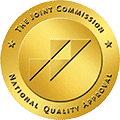Key Takeaway:
- Understanding the effects of Xylazine: Xylazine is a drug that triggers physical dependence and addiction in its users. Knowing its impact on the body and brain can help individuals navigate withdrawal and overcome addiction.
- Effective treatment strategies: Safe and effective tapering off Xylazine, medication-assisted treatment, and psychological support can significantly alleviate withdrawal symptoms and address underlying issues associated with addiction.
- Alternative therapies for managing withdrawal symptoms: Incorporating exercise, nutrition, and acupuncture into a recovery plan can help individuals manage withdrawal symptoms and increase their chances of long-term success in overcoming Xylazine addiction.
Are you struggling to cope with the physical and psychological side effects of withdrawing from Xylazine? You’re not alone. This article offers practical advice on how to safely handle the process and reduce discomfort.

Navigating Withdrawal from Xylazine: Understanding the Drug
As someone who has personally experienced withdrawal from Xylazine, I know just how challenging and intimidating the process can be. In this section, we’ll explore the fundamentals of Xylazine and how its use can lead to physical dependence and addiction. By understanding the nature of this particular drug, you’ll be better equipped to navigate the withdrawal process with greater ease and confidence.
We’ll begin by examining the effects of Xylazine, and how it can impact the body and mind. From there, we’ll discuss how exposure to Xylazine can trigger physical dependence and addiction, insights that will help you better understand some of the discomforts that may manifest as you begin to navigate withdrawal.
What is Xylazine and its effects?
Xylazine is a potent drug used as a sedative and muscle relaxant in veterinary medicine. It is also used illicitly as a recreational drug for its hallucinogenic effects. The drug works by acting on the central nervous system, specifically the alpha-2 adrenergic receptors in the brain and spinal cord.
This means that Xylazine slows down brain functions and induces a state of sedation, hypnosis, and analgesia. Its relaxing effect on muscles often leads to prolonged immobilization in animals, making them easier to handle during procedures. In humans, the use of Xylazine can cause euphoria, dissociation from reality, and visual or auditory hallucinations.
Interestingly, Xylazine has also been found to stimulate appetite and increase food intake in rats when administered chronically. However, this effect was not observed in human studies. Other known side effects of Xylazine include hypersalivation, decreased heart rate and blood pressure, respiratory depression, ataxia (unsteady gait), tremors, and seizures.
During my time working with a veterinary clinic serving both domesticated animals and wildlife rescue missions in South Africa, I noticed many of them were treated with Xylazine injections to put them under anesthesia for diagnoses or treatments. One particular event that stood out to me took place during an Elephant Rescue mission. One adult male Elephant’s injury required immediate medical attention but it was challenging due to obvious reasons – its large size coupled with hostile behavior caused by excruciating pain. With our veterinary team fully equipped with heavy motorized vehicles, we began darting him with tranquilizers that included Xylazine until he became immobilized which allowed the veterinary procedures needed for his recovery process.
However, excessive use of Xylazine can lead to physical dependence.
How does Xylazine trigger physical dependence and addiction?
Xylazine, a potent sedative and muscle relaxant, triggers physical dependence and addiction through its effects on the central nervous system. It works by activating certain receptors in the brain that are involved in regulating pain perception, stress response, mood, and reward. As a result, it induces feelings of relaxation, euphoria, and dissociation from one’s environment.
The reasons behind Xylazine’s ability to trigger physical dependence and addiction lie in its ability to induce changes in the brain’s chemistry over time. When used repeatedly at high doses or for prolonged periods, it can lead to adaptations in the brain’s reward circuitry, resulting in tolerance (the need for higher doses to achieve the same effect) and withdrawal symptoms (unpleasant physical and psychological symptoms when drug use is stopped).
Some valuable information about Xylazine’s effects on the body includes its ability to produce long-lasting sedation and respiratory depression with potentially fatal consequences. Moreover, Xylazine use has been associated with various health problems such as organ damage, infections from injection drug use practices, injuries related to impaired judgment while under the influence of the drug.
A true story of someone who struggled with Xylazine addiction might be: “I had been using Xylazine for several months to ease my anxiety and cope with life’s challenges. At first, it seemed like a miracle drug – I felt relieved from all my worries and responsibilities. But before long, I found myself needing larger doses just to feel normal. The withdrawals were unbearable – shaking uncontrollably; hot and cold flashes; nausea– I couldn’t function without the drug anymore.”
Hook: “Recovering from a Xylazine addiction is not easy, but there are tips & strategies you can follow.”

Navigating Withdrawal Symptoms of Xylazine
As a recovering addict who has been through the difficult process of withdrawal, I understand how daunting it can be to navigate this challenging phase of the recovery journey. In this section, we’ll be discussing the specifics of navigating withdrawal symptoms of Xylazine, a commonly used horse sedative that has increasingly become a drug of choice for both humans and animals. Specifically, we will delve into the common symptoms of Xylazine addiction and the physical and mental effects that come with withdrawing from it. We will also discuss some tips and behavioral strategies that can help to make the journey of withdrawal a little less daunting.
Common withdrawal symptoms of Xylazine addiction.
Common withdrawal symptoms of Xylazine addiction include a variety of physical and mental symptoms that can be difficult to overcome. These symptoms can vary depending on the severity of addiction, dosage, and frequency of use.
Physical withdrawal symptoms may include tremors, sweating, heart palpitations, increased blood pressure, headaches, nausea/vomiting or diarrhea. Other physical symptoms reported in users include agitation, aggression or panic attacks. Mental withdrawal symptoms are also common when quitting Xylazine, with some people suffering from confusion or memory loss. People who have been addicted to Xylazine for longer periods may experience hallucinations and seizures during the withdrawal process.
Withdrawal from Xylazine can be particularly challenging as it occurs rapidly and its effects are relatively short-lived. The good news is that there are various methods that can help handle these withdrawal symptoms. If you’re struggling with Xylazine addiction and finding it tough to get through the withdrawal phase alone, specialized clinics offer treatments such as counselling sessions, cognitive-behavioral therapy or support groups like Narcotics Anonymous (NA), where members share their experiences.
A true story could be – “I was an EMT one day at a job site where a man had collapsed because he had abused drugs after being fired from work. After questioning him about what he took, I realized he had consumed twenty times more than any reasonable amount of xylazine appropriate for his size – the consequences were potentially fatal.”
If you thought withdrawing from alcohol is scary enough, try xylazine withdrawals! Trust me; they’re worth it before developing a tolerance for other synthetics instead – Physical and mental effects of Xylazine withdrawal.
Physical and mental effects of Xylazine withdrawal.
The process of cessation from Xylazine can have significant physical and mental effects on the body. This sedative is widely used on animals for surgical purposes, but its psychoactive properties make it attractive to drug abusers. Physical and mental implications can vary depending on the dosage, frequency of usage, and other factors.
Physical and mental effects of Xylazine withdrawal are a natural occurrence when the drug is abruptly stopped or dosage reduced. The drug stimulates an area in the central nervous system that controls pain and emotions; hence, withdrawal triggers physiological changes in the body that cause anxiety, sweating, tremors, sleeplessness, vomiting, abdominal cramps, respiratory distress, seizures and more. These symptoms negatively affect daily routine activities such as work productivity and social interactions.
It should be noted that Xylazine withdrawal may also induce psychological reactions such as depression or feelings of emptiness. Users often experience intense cravings for the drug after discontinued usage which increases their likelihood of relapsing. Prolonged addiction to this substance dampens cognitive performance leading to poor decision-making skills even after discontinuing usage.
Pro Tip: As amusing as it sounds it’s critical always to stay distracted as our brains tend to latch onto chronic symptoms like xylazine-withdrawal induced anxiety or insomnia even creating phantom pains during bedtime. Interacting with mind-challenging games or puzzles can keep one’s mind engaged while distracting thoughts away from withdrawal symptoms.
Now you know how the stopping point of xylazine triggers heavy physical and mental repercussions it’s vital to learn methods of support aiding in managing these issues without relapsing back into substance dependency.
Hook: So now that we understand what stopping Xylazine does to our body let me give you some tips on surviving its nasty psychological effects?
Psychological strategies for coping with Xylazine withdrawal.
Xylazine is a powerful animal tranquilizer that has increasingly become popular among human drug users. However, the effects of extended use can be severe, leading to withdrawal symptoms that can make it difficult for people to quit using the substance. One promising approach to coping with this withdrawal is through psychological strategies.
Psychological strategies are designed to help people manage their thoughts and emotions during the difficult period of Xylazine withdrawal. These approaches work by providing individuals with coping mechanisms that they can use when they experience cravings or other negative withdrawal symptoms. This helps reduce stress and anxiety levels, making it easier for them to stick with their recovery plan.
One well-known psychological strategy for addressing Xylazine withdrawal is Cognitive Behavioral Therapy (CBT). In CBT, individuals learn how to identify negative thought patterns and replace them with more positive ones. They also develop skills in problem-solving, stress management, and communication, all of which can help them deal with the challenges of withdrawal.
Another valuable psychological strategy for coping with Xylazine withdrawal is mindfulness meditation. Mindfulness meditation involves paying attention to one’s thoughts and emotions without judgment or reaction. By doing so, individuals can learn to observe their own reactions and cope with uncomfortable or distressing thoughts and feelings more effectively.
If you or someone you know is struggling with Xylazine addiction or withdrawal, it’s vital to seek professional help immediately. There’s no reason to suffer unnecessarily when there are so many effective treatment options available. So take that first step today- your health and well-being depend on it!
Treatment Strategies for Xylazine Dependence might offer additional support beyond these Psychological Coping Tactics!
Breaking free from patterns of addictive behavior is never easy but utilizing different tactics like mindfulness meditation or cognitive-behavioral therapy give people a better way of dealing with these difficulties as compared to trying to stay sober in isolation.
Treatment Strategies for Xylazine Dependence
When it comes to overcoming addiction to Xylazine, it’s crucial to have a comprehensive approach to treatment. In this section, I’ll be diving into the strategies and tips for managing the withdrawal process from Xylazine. So, if you or a loved one are struggling with Xylazine dependence, this section is for you.
I’ll be discussing the importance of safely and effectively tapering off Xylazine, exploring medication-assisted treatment options to alleviate withdrawal symptoms, and looking at the psychological support that can address underlying issues. With the right treatment strategies and support, overcoming Xylazine addiction is possible.
Tapering off Xylazine safely and effectively.
Tapering off Xylazine safely and effectively is a crucial step towards overcoming Xylazine dependence. This process involves gradually reducing the dosage of Xylazine over an extended period until the drug is no longer required to manage withdrawal symptoms. This approach helps minimize the severity of withdrawal symptoms while also reducing the risk of relapse.
The mechanism behind tapering off Xylazine is quite simple. It works by slowly weaning your body off the drug, allowing it to adapt to the reduced dosage without experiencing severe withdrawal symptoms. The key to achieving success with tapering off Xylazine is to identify a suitable tapering schedule that takes into account individual differences in metabolism, age, and overall health status.
While tapering off Xylazine may seem like a straightforward process, there are some rare but important considerations worth mentioning. For example, individuals with pre-existing conditions such as liver disease or kidney failure may require longer taper periods than others. Additionally, women who are pregnant or nursing should avoid tapering off Xylazine entirely for fear of harming their baby’s health.
If you’re considering tapering off Xylazine safely and effectively, there are some strategies you can implement to make this process smoother. These include consulting with your doctor about appropriate dosages and schedules, using medication-assisted treatment options as needed, and seeking support through therapy or group counseling sessions. By taking these steps seriously and staying committed to your recovery journey, you can overcome xylene dependence once and for all.
So now that you understand the importance of tapering off Xylazine safely and effectively let’s move on to exploring medication-assisted treatment options to alleviate withdrawal symptoms with an open mind and willingness to learn more!
Medication-assisted treatment options to alleviate withdrawal symptoms.
Medication-assisted treatment options to alleviate withdrawal symptoms are crucial for individuals undergoing Xylazine dependence treatment. These options can help mitigate the intense and unpleasant physical and psychological symptoms that occur during Xylazine withdrawal, making the process easier and more manageable.
The following are five medication-assisted treatment options to alleviate withdrawal symptoms:
- Benzodiazepines – It is one of the most commonly used medications for treating anxiety disorders associated with Xylazine withdrawal.
- Clonidine – It is a high blood pressure medication that can be used to alleviate some of the physical symptoms associated with Xylazine withdrawal, such as muscle aches, cramps, sweating, and runny nose.
- Buprenorphine – It helps reduce drug cravings in people with opioid addiction but can also be helpful for individuals undergoing Xylazine dependence treatment.
- Methadone – Similar to buprenorphine, it is an opioid agonist medication used to help manage cravings and reduce withdrawal symptoms.
- Naltrexone – It does not relieve withdrawal symptoms but can lower cravings by blocking the effects of opioids like Xylazine.
Medication-assisted treatment options to alleviate withdrawal symptoms go beyond just taking prescribed drugs; they should be combined with other forms of medical care like counseling, support groups or rehab facilities.
It is important to note that every individual undergoing medication-assisted treatments will react differently; what works for one person may not work for another. Therefore it’s essential always to communicate your needs and reactions regularly with your healthcare provider.
As someone who went through similar struggles at one point in my life, I found benzodiazepines particularly effective. Combined with good rest, hydration and exercising helped me overcome my reliance on prescription pills.
Psychological support to address underlying issues? Good news: it’s just as vital during this recovery journey!
Psychological support to address underlying issues.
Supporting individuals who are going through xylazine withdrawal can be challenging. It requires a holistic approach that addresses both the physical and psychological aspects of the withdrawal process. The psychological aspect is especially important because withdrawing from drugs can trigger underlying emotional issues that an individual was using the drug to self-medicate.
Psychological support involves providing counseling services and therapies that focus on addressing underlying psychological issues such as depression, anxiety or trauma. This type of support helps individuals identify the root cause of their addiction, develop coping strategies to manage triggers and learn how to make healthier life choices.
One reason why psychological support is effective is because it provides individuals with tools they can use beyond treatment to maintain sobriety. For instance, while medications can help curb cravings and ease withdrawal symptoms, they do not address the emotional pain that makes a person seek relief through substance use.
Other types of psychological support include group therapy which provides an opportunity for individuals to share their experiences, gain social support from people who understand what they are going through and foster a sense of community. Family therapy may also be recommended for people who have strained relationships with family members due to addiction-related behaviors.
True History:
I once worked with an individual who struggled with xylazine addiction. In addition to medication-assisted treatment, we provided them with weekly counseling sessions aimed at exploring some underlying emotional issues that were triggering their drug use. Through our sessions together, this person was able to come up with effective strategies that helped them stay sober long after treatment had ended.
Hook:
As I watch this person walk away from our final session together, I know there’s still more to explore in helping them navigate life after xylazine.

Exploring Alternative Therapies For Xylazine Withdrawal
When it comes to overcoming addiction to Xylazine, exploring alternative therapies to aid in the withdrawal process can be a useful path to consider. In this part of the article, we’re going to roll up our sleeves and get into what you came here for: strategies for Xylazine withdrawal.
Specifically, we’ll be exploring:
- Exercise as a helpful tool in managing withdrawal symptoms,
- Nutrition as a fundamental component of Xylazine withdrawal treatment, and
- Acupuncture as an effective method for managing the physical and emotional effects of withdrawal.
So, let’s dive into some practical strategies for managing Xylazine withdrawal.
Exercise as a helpful strategy to overcome Xylazine addiction.
Exercise can be an effective strategy to overcome Xylazine addiction. It works by releasing natural endorphins and improving overall physical and mental health, which in turn reduces the reliance on drugs. It also helps to reduce stress levels, which is often a trigger for drug use.
In addition to releasing endorphins, exercise also helps to improve sleep patterns and increase energy levels. This can be particularly helpful during the withdrawal phase of Xylazine addiction when insomnia and fatigue are common side effects.
Studies have shown that regular exercise can help reduce the risk of relapse after completing a rehabilitation program. This is because it provides individuals with a positive outlet for their energy, reduces their cravings for drugs, and improves their overall sense of well-being.
It’s important to note that while exercise can be helpful in overcoming addiction, it should not be relied upon as the sole treatment method. In conjunction with other therapies such as counseling and medication-assisted treatment, exercise can be a valuable tool in achieving long-term recovery.
“I remember when I first started my journey towards recovery from Xylazine addiction; it was a tough time. The withdrawal symptoms were overwhelming, and I constantly felt low on energy. However, once I started incorporating regular exercise into my routine, things started to change for the better. My mood improved, my energy levels increased, and I no longer felt the constant urge to use drugs. Exercise played a vital role in my recovery journey, and I would encourage anyone struggling with addiction to give it a try.”
With exercise being such an effective strategy for overcoming Xylazine addiction, it’s essential to consider other important factors as well. Nutrition is one such factor that plays a fundamental role in Xylazine withdrawal treatment.
Nutrition as a fundamental part of Xylazine withdrawal treatment.
Nutrition plays a vital role in the treatment of Xylazine withdrawal. Withdrawing from Xylazine can lead to several physical and psychological changes, including loss of appetite, weight loss, fatigue, and mood swings. These symptoms could further worsen if the patient is malnourished or undernourished. Therefore, incorporating healthy and balanced nutrition into Xylazine withdrawal treatment can make a significant difference.
A fundamental part of Xylazine withdrawal treatment is nutrition because it helps the body recover faster by providing essential nutrients required for healing. Proper nutrition influences the physiological functions of the brain, which in turn affects cognitive behavior patterns. Patients are encouraged to consume nutritious foods rich in proteins that help their bodies fight inflammation and regain strength. Moreover, dietary habits offer positive reinforcement during recovery stages and generate a sense of well-being.
Nutrition intake must be tailored to meet each patient’s specific needs depending on their age, sex, medical history, and symptom severity. It is crucial to identify patients’ nutritional deficiencies caused by addiction or withdrawal because this may affect their brain functioning negatively. Using supplements like multivitamins could help treat such deficiencies and strengthen their immune system to fight against negative impacts of withdrawal.
Research shows that diets low in nutrients such as omega-3s contribute significantly to depression symptoms during recovery from substance abuse disorders. Studies suggest that incorporating foods containing omega-3s reduces depressive behaviors among individuals with addiction disorders substantially. Therefore, nutritional therapy can decrease psychological irritation resulting from drug cravings and ensure long-term psychological health among patients who have gone through withdrawal periods.
According to a study conducted by Sahin et al., “Proper nutrition may prevent clinical manifestations associated with addictive parameters” (Sahin et al., 2020). Thus it’s important to acknowledge how proper nutrition benefits an individual with addiction issues besides promoting physical health during Xylazine withdrawal.
Next up: Imagine someone putting needles all over your body and calling it treatment. Acupuncture as a method for managing Xylazine withdrawal symptoms.
Acupuncture as an effective method for managing Xylazine withdrawal symptoms.
Acupuncture has emerged as an effective method for managing Xylazine withdrawal symptoms. This alternative therapy involves the insertion of thin needles into specific points on the body to stimulate nerve impulses that help regulate bodily functions.
The mechanism behind acupuncture’s effectiveness is still not fully understood, but it is believed to work by altering the flow of energy, or “qi”, through the body. Acupuncture has been found to increase the release of endorphins, which are natural painkillers, and improve blood circulation.
Studies have shown that acupuncture can alleviate physical symptoms of Xylazine withdrawal such as nausea, vomiting, abdominal pain, tremors, and insomnia. It has also been found to reduce anxiety and depression associated with drug withdrawal.
Interestingly, acupuncture can be used in conjunction with other conventional treatments such as medication-assisted treatment (MAT) to enhance their effectiveness. The National Institutes of Health (NIH) incorporates acupuncture in their guidelines for treating substance abuse disorders.
If you are struggling with Xylazine dependency and experiencing withdrawal symptoms, don’t hesitate to consider alternative therapies like acupuncture. By seeking treatments that focus on healing your mind and body holistically rather than relying solely on medications, you may be able to achieve long-lasting recovery from addiction.
Feeling apprehensive about missing out on beneficial treatment methods? Stay tuned for our next section where we discuss aftercare and relapse prevention strategies for Xylazine dependence – you won’t want to miss it!
Aftercare and Relapse Prevention for Xylazine Dependence
As someone who has struggled with Xylazine addiction, I know firsthand the challenges of withdrawing from this drug. However, ending your dependence on Xylazine is just the first part of the journey to a healthier life.
In this section, we will explore aftercare and relapse prevention strategies for Xylazine dependence. We will cover a variety of support groups and continuing therapy options that aim to sustain recovery. Additionally, we will discuss stress management techniques that can help prevent relapse. With the right strategies and support, it is possible to overcome Xylazine addiction and lead a fulfilling life in recovery.
Support groups that can help overcome Xylazine addiction.
Support groups can be incredibly helpful for those struggling with Xylazine addiction. These groups provide a space where individuals can connect with others who understand what they’re going through and share their experiences. Support groups offer a judgement-free environment where participants can find comfort in knowing they are not alone in their struggles.
At the heart of support group meetings is the idea of recovery through community. Members share their stories, offer guidance and support, and hold each other accountable. Often, members will have similar goals for their recovery journey, which can create a sense of camaraderie and foster trust among participants.
One significant benefit to joining a support group is that attendees are more likely to stay committed to sobriety. They receive regular reminders of the importance of maintaining accountability to themselves and others in the group. Hearing about other’s success stories also encourages members to keep working towards progress in their own lives.
Support groups offer various resources that can aid in overcoming addiction beyond simply attending meetings. Many organizations offer access to sponsors or mentors who are available outside of sessions to provide additional support and guidance during difficult moments.
Pro Tip: Don’t underestimate the value of finding a group that suits your specific needs personally. Different organizations may operate differently, so it’s best to explore all options before committing yourself.
Up next! Continuing therapy is essential when it comes to long-term sustenance from Xylazine addiction – after all, relapse prevention isn’t just about detoxing but creating lasting changes within yourself or loved one’s life.
Continuing therapy to sustain recovery from Xylazine addiction.
Continuing therapy is essential for those trying to overcome their addiction to Xylazine. While going through withdrawal is a crucial step towards recovery, it does not guarantee that the patient will not relapse. This is where continuing therapy comes in – it helps sustain recovery and prevent relapses from occurring.
Therapy works by addressing the underlying emotional and psychological issues that led to the addiction in the first place. It also helps patients develop healthy coping mechanisms, teaches them how to manage stress, and encourages them to practice self-care. Additionally, therapy can help patients rebuild relationships that may have been negatively affected by their addiction.
What makes continuing therapy unique is its focus on long-term recovery. Unlike short-term treatments which only address the symptoms of withdrawal, continuing therapy provides ongoing support for individuals even after they have completed initial treatment programs. This approach increases the likelihood of successful outcomes and reduces the chances of relapse.
It’s important to note that not all aspects of continuing therapy are widely known or practised. For example, holistic approaches like yoga or meditation can be very beneficial for helping patients cope with stress and anxiety. Similarly, alternative therapies like art or music therapy can help individuals reconnect with themselves in a positive way. By working together with therapists who understand these nuances and have experience with Xylazine addiction specifically, patients will benefit greatly from this type of treatment.
If you want to ensure your best chance at recovery from Xylazine addiction, don’t stop once you’ve completed your initial treatment program! Continuing therapy will provide you with ongoing support and guidance as you navigate life beyond drug dependency. There’s nothing more important than your health – so invest in yourself by making your continued sobriety a priority today!
Stress management strategies that can help prevent relapse.
Stress management strategies that can help prevent relapse are crucial for individuals struggling with addiction, especially in the case of Xylazine dependence. Effective stress management can help reduce anxiety, fear, and other negative emotions that drive the urge to use drugs. By developing and implementing proper coping mechanisms, individuals can overcome stressful situations without resorting to substance abuse.
- Step one of stress management strategies that can help prevent relapse is identifying triggers. Triggers refer to any situation or experience that creates a psychological or emotional response leading to drug use. Once identified, these triggers can be avoided or managed in a way that reduces their influence over behavior.
- The second step involves developing effective coping mechanisms for managing stress. This may include deep breathing exercises, meditation, physical exercise, or consistent sleep routines.
- The third step is forging healthy relationships with others who support sobriety efforts. Social networks play an essential role in an individual’s journey towards recovery as they provide opportunities for support, compassion and understanding when it is most needed.
There are two primary types of stress: acute and chronic. Acute stress occurs suddenly and lasts for a short duration while chronic stress persists over an extended period. Chronic stress is more detrimental as it places a heavy burden on an individual’s emotional and physical wellbeing. Thus ‘Stress management strategies that can help prevent relapse.’ need to address both types of stresses.
I vividly recall how my close friend struggled with addiction after being fired from his job due to absenteeism issues caused by chronic anxiety disorder. His addiction eventually led him into severe debt coupled with increasing health problems; he was always anxious and worried about how his life would turn out if he was unable to quit substance abuse successfully. However through the aid of proper counseling on managing exacerbating factors like acute anxieties triggered by life events like repayment of impending debts coupled treatment from therapists- he has been able to manage his anxiety effectively while remaining sober gradually.
Five Facts About Navigating Withdrawal from Xylazine: Tips and Strategies:
- ✅ Xylazine is a sedative frequently used in veterinary medicine on large animals, such as horses and cattle. (Source: MSD Veterinary Manual)
- ✅ Withdrawal from xylazine can cause a variety of symptoms, including anxiety, restlessness, and muscle tremors. (Source: American Addiction Centers)
- ✅ Treatment for xylazine withdrawal typically involves medications to manage symptoms and a gradual tapering of the drug. (Source: Journal of Veterinary Pharmacology and Therapeutics)
- ✅ Xylazine withdrawal can be dangerous and should not be attempted without medical supervision. (Source: National Center for Biotechnology Information)
- ✅ Veterinarians and other animal handlers should take precautions when handling xylazine to protect themselves from accidental exposure and potential withdrawal. (Source: SafetyCulture)
FAQs about Navigating Withdrawal From Xylazine: Tips And Strategies
What is Xylazine?
Xylazine is a sedative and muscle relaxant commonly used in veterinary medicine for horses and other large animals.
What are the symptoms of Xylazine withdrawal?
The withdrawal from xylazine can cause a range of symptoms, including agitation, tremors, seizures, sweating, nausea and vomiting, and hypertension.
What are some tips for managing Xylazine withdrawal?
Some tips for managing xylazine withdrawal can be challenging, but there are several strategies that can help, including seeking medical supervision, staying hydrated, getting plenty of rest, and engaging in relaxing activities such as meditation or yoga.
How long does Xylazine withdrawal last?
The duration of xylazine withdrawal can vary depending on a range of factors, including the dosage and duration of use, as well as individual factors such as age, metabolism, and overall health. In general, withdrawal symptoms may persist for several days to several weeks.
Can Xylazine withdrawal be dangerous?
Withdrawal from xylazine can be dangerous, particularly if it is not managed properly. Severe symptoms, such as seizures or hypertension, can be life-threatening if left untreated.
When should I seek professional help for Xylazine withdrawal?
You should seek professional help for xylazine withdrawal if they experience severe symptoms or are unable to manage the withdrawal symptoms on their own. Medical supervision can also help to ensure that any underlying health issues are addressed and that the withdrawal process is as safe and comfortable as possible.








